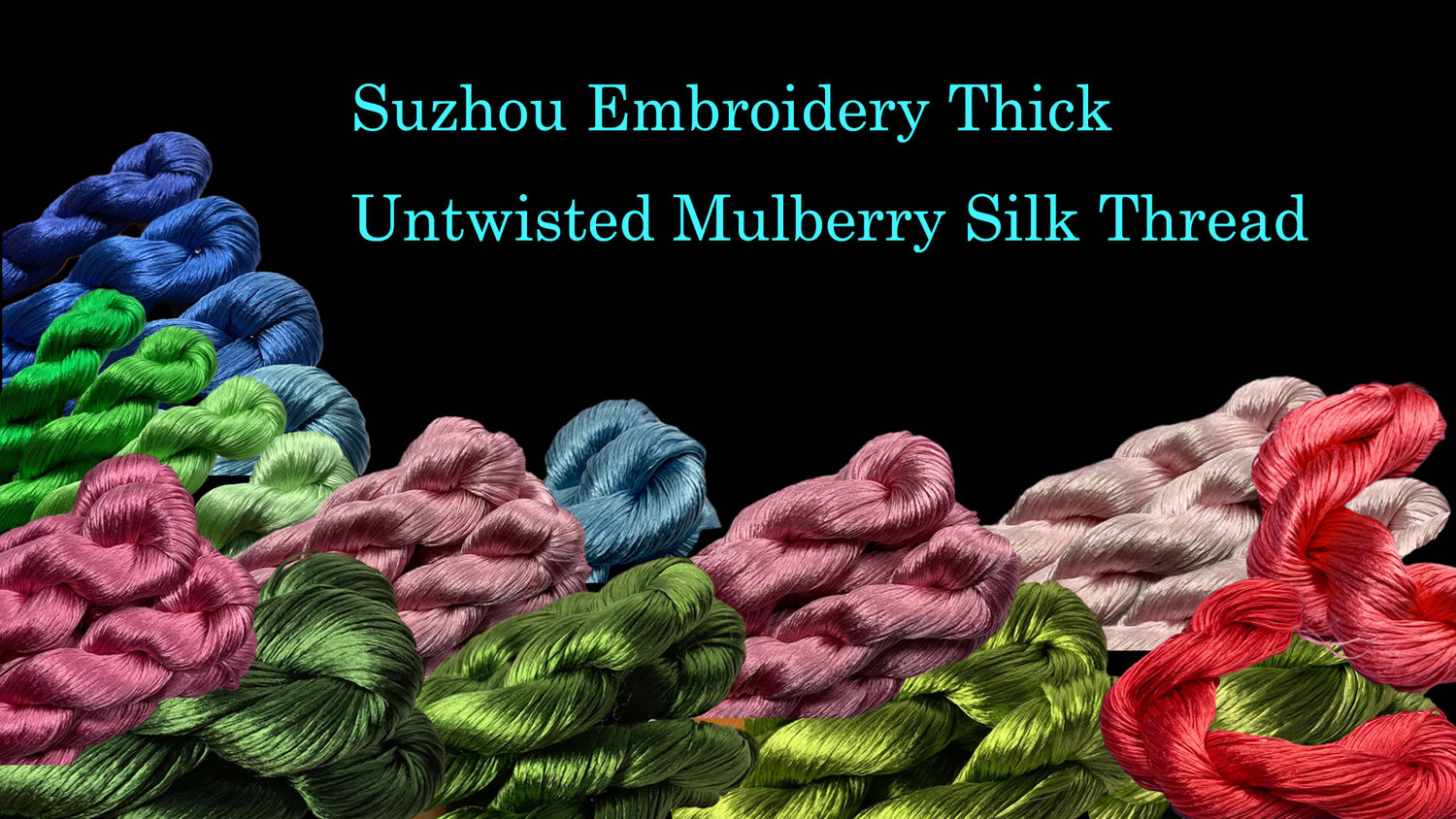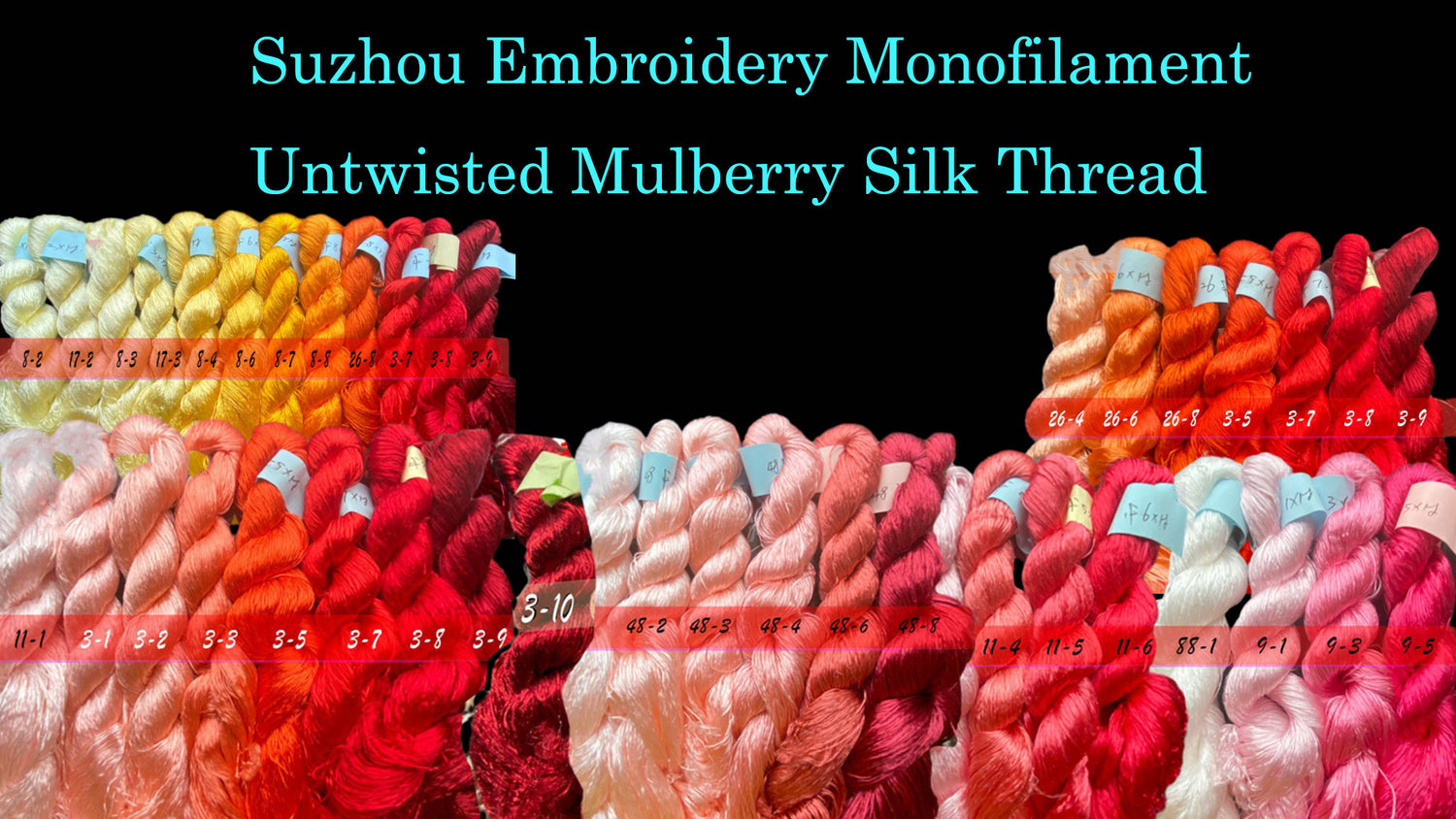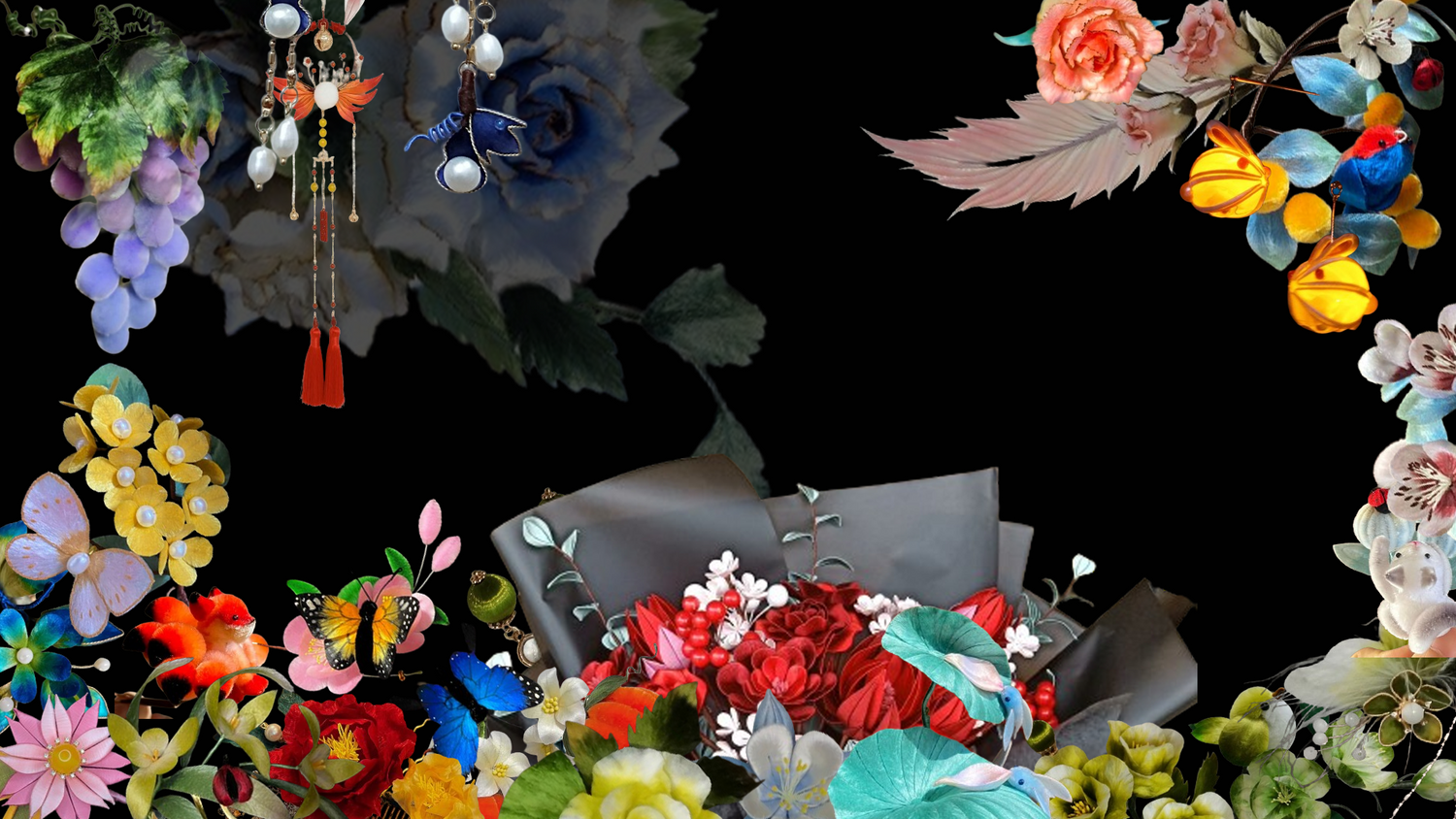
Basic Techniques for Making Chanhua
Share
This section will start with the basic techniques of Chanhua, breaking down the steps needed in the Chanhua making process to show readers the details of each step, helping them to be more proficient in making Chanhua.
3.1.1 Techniques of Chanhua
The techniques of Chanhua mainly include splitting threads and starting, single piece Chanhua techniques, adding multiple pieces of card paper, and twisting.
1. Splitting Threads and Starting
Splitting threads and starting are essential steps in the Chanhua making process. We usually perform thread splitting on silk threads. Splitting threads refers to dividing a single thread into two parts, making the Chanhua more three-dimensional. Starting is a necessary step to secure the silk thread onto the wire. Here is a detailed explanation of the splitting threads and starting process.
Splitting Threads: Take a silk thread and divide it into two strands from one end. Use the split strands together, as shown in the image below. (Unsplitted silk threads can be used directly.)

Starting: Hold the wire and silk thread with your left hand. Starting from 1 cm from one end of the wire, wrap the silk thread from left to right towards the other end of the wire. When reaching the end of the wire, change the wrapping direction from right to left, covering the previously wrapped part. Wrap to the starting point to complete the starting process, as shown in the image below.

2. Single Piece Chanhua Technique
After completing the starting, place the card paper under the wire and wrap the silk thread evenly along the card paper. Ensure the card paper is fully covered and wrapped evenly and tightly, so the card paper is not visible through the silk thread. When wrapping the silk thread to about 5mm from the card paper, bend the reserved wire from the starting to the back of the card paper, as shown in the image below.

3. Adding Multiple Pieces of Card Paper
For single piece Chanhua, wrap from one end of the card paper to the other, as shown in the left part of the image below. Typically, the petals and leaves that need to create a three-dimensional effect consist of two symmetrical pieces of card paper. In these cases, two pieces of card paper need to be added to one wire. Be sure to distinguish the ends of the card paper, especially when the ends differ in size and width. For adding two pieces of card paper, start and end wrapping with the identical ends of the two card papers in the order of "head, tail, tail, head", as shown in the right part of the image below.

To add more pieces of card paper on one wire, follow a specific sequence. The image below shows the sequence for adding 3 and 4 pieces of card paper. Additional pieces can be added from left to right or from inside to outside. The difference lies in the method and angle of bending the wire according to the shape of the card paper.

4. Twisting
Twisting involves wrapping copper wire or iron wire with silk thread to give the wire the texture of the silk thread. In the Chanhua making process, twisting is usually for creating special shapes or effects. Here's a brief introduction to the twisting method using iron wire as an example. Use split silk threads, leaving 1 cm at one end of the wire, and wrap the silk thread together with the starting technique, wrapping to one end and then reversing to cover the wire evenly, as shown in the image below.

When twisting an entire wire, the silk thread may be too short, requiring an extension. To add a thread, glue the end of the previous thread with white glue, ensuring it's firmly pressed before the glue dries to prevent slipping. Start a new thread on the wire and continue twisting, as shown in the image below.

3.1.2 Adding Thread and Wire
When making Chanhua, you may encounter situations where the silk thread is not long enough, requiring an extension. For beginners, improper threading can lead to unraveling. To add a thread, secure the end of the old thread on the back of the wire or card paper, preventing slipping. Secure the new silk thread similarly, as shown in the image below.

Twist the ends together and continue wrapping with the new thread, slightly overlapping the previous wrap to cover the card paper on the back, as shown in the image below.

In addition to adding thread, you may need to add new wire when the wire is too short. Adding wire is similar to adding thread. Leave an unwrapped portion of the old wire, insert a new wire into the gap between the card paper and old wire, and wrap tightly with silk thread, as shown in the image below.









1 comment
Excelente trabajo,me encantaría saber hacerlo